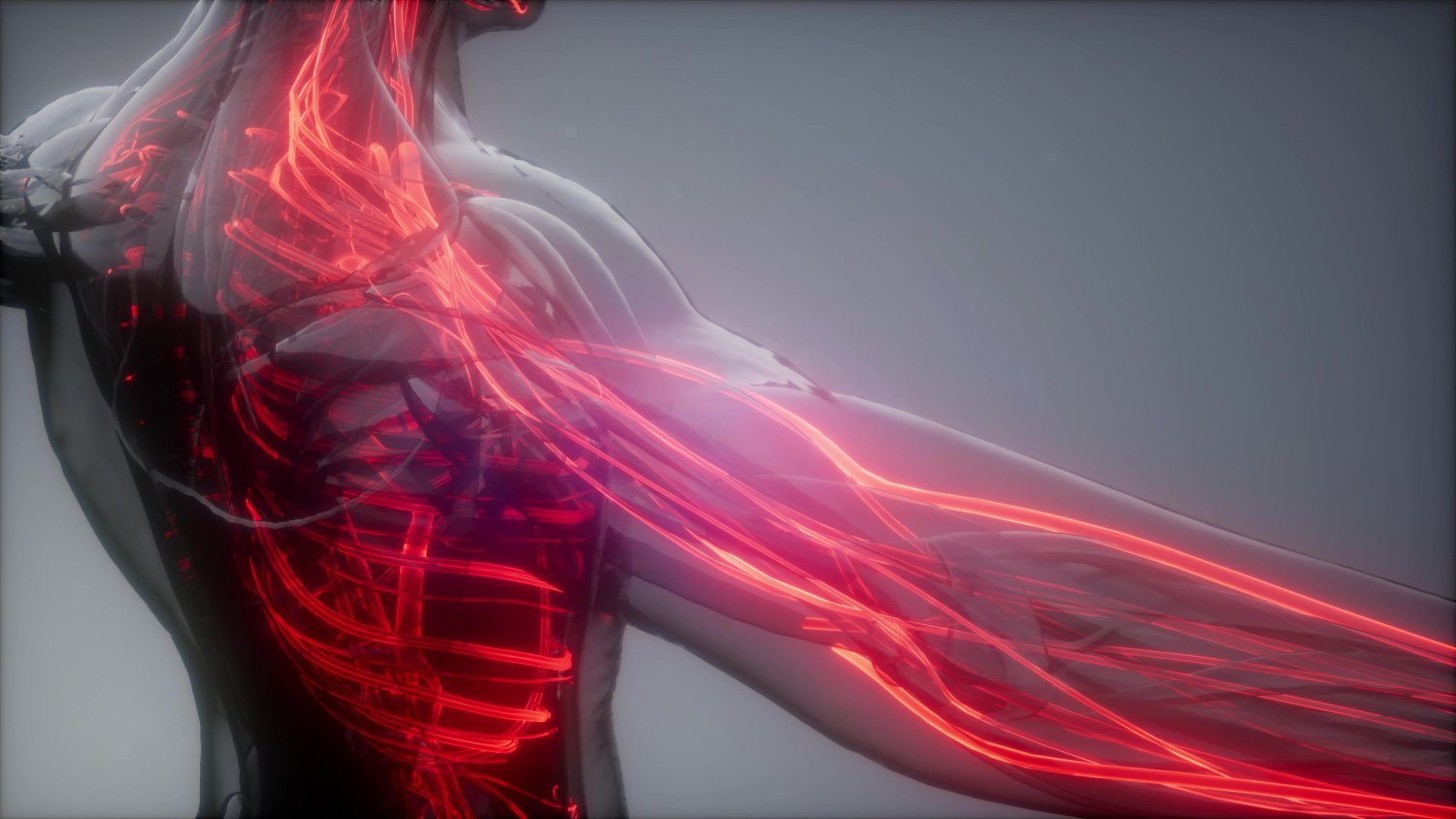
by Matt Weik, BS, CSCS, CPT, CSN
When you train, do you ever wonder what muscle fibers you’re hitting? No, I’m not talking about a specific muscle, but rather slow- and fast-twitch muscle fibers.
No?
Perhaps you should.
If you’re looking to improve strength and speed, you need to be targeting specific fast-twitch muscle fibers. Your skeletal muscles, including biceps, triceps, quads, and glutes, contain both slow-twitch (type I) and fast-twitch (type II) fibers.
While both fiber types are present from birth, it’s possible to increase, train, and strengthen type II muscle fibers through specific exercises.
Understanding fast-twitch muscle fibers is important for optimizing your fitness routine and supporting overall health, as proper training techniques can help develop these performance-enhancing fibers.
In this article, we will dive deeper and learn more about fast-twitch muscle fibers and how you can leverage them to build a better, stronger physique.
Disclaimer: This article is for informational purposes only and is not meant to treat or diagnose any condition. It is recommended that you speak with your doctor before starting any exercise program, making changes to your nutrition plan, or adding any new supplements into your current regimen.
What are Fast-Twitch Muscle Fibers?
Fast-twitch muscle fibers (Type II) produce short, powerful contractions during explosive activities such as sprinting, weightlifting, and box jumps. These fibers contract rapidly to create significant force.
Fast-twitch fibers are divided into two categories: Type IIa and Type IIx (or Type IIb).
- Type IIa muscle fibers function as intermediate fibers. They produce more force than Type I fibers but less than Type IIx. Size-wise, they are larger than Type I and smaller than Type II, comparable to classic spaghetti. These fibers can utilize two different energy processes.
- Type IIx (also known as Type IIb) muscle fibers serve as the primary force generators. These fibers produce the highest-intensity contractions necessary for heavy lifting, sprinting, and jumping, all activities that require substantial force in brief periods. They generate energy through anaerobic glycolysis, a process that occurs without oxygen, allowing for quick energy production but with a limited duration. These represent the largest fiber type, similar in size to linguine pasta.
What’s the Difference Between Fast-Twitch and Slow-Twitch Muscle Fibers?
Slow-twitch muscle fibers (Type I) function primarily for endurance activities and slower contractions. These fibers produce low-force contractions but maintain activity for extended periods.
Postural muscles and the lower calf (soleus) exhibit these fibers, which help maintain your upright positions and slower movements for extended periods before fatigue finally sets in.
Type I fibers have smaller diameters compared to Type II fibers, similar to angel hair pasta, but receive enhanced blood flow. This blood delivers oxygen that enables these fibers to utilize aerobic respiration for energy production, supporting sustained muscle activity over long periods.
In contrast, Type II muscle fibers have larger dimensions than Type I fibers but receive reduced blood flow, resulting in quicker fatigue. With limited oxygen availability for aerobic respiration, these fibers depend on anaerobic glycolysis for energy generation. This process provides faster energy but depletes more rapidly than aerobic respiration.
Benefits of Fast-Twitch Muscle Fibers
Fast-twitch muscle fibers are optimized for short, intense activities, such as:
- sprinting
- powerlifting
- high-intensity interval training (HIIT)
- jumping
- strength training
- agility training
- high-intensity cycling
Why Should You Train Fast-Twitch Muscles?
You don’t have to be an elite athlete to appreciate the importance of training fast-twitch muscle fibers. It benefits both your performance and everyday life.
Fast-twitch muscle fibers are responsible for activities that require strength and power. Though not everyone needs to power lift or sprint competitively, having these capabilities remains important.
Maintaining these fibers enhances quick, explosive movements, such as rushing across streets, lifting objects rapidly, or jumping onto various surfaces.
Being able to move swiftly is crucial in your daily life. Whether you’re dodging bicycles or cars in motion, catching yourself during a fall, or engaging in active play with your kids, these actions depend on fast-twitch muscle function.
This becomes increasingly important with age, as fast-twitch fibers naturally decline over time. Without regular use, these fibers diminish or convert to slow-twitch dominance, even during younger years.
Daily activities, such as walking and desk work, primarily use slow-twitch fibers, which makes deliberate fast-twitch exercise necessary for preservation.
How Do You Train Fast-Twitch Muscle Fibers?
Below are four effective strategies for training fast-twitch muscle fibers:
- Training with substantial resistance activates more muscle motor units, engaging additional muscle fibers. As the weight you use increases, more fast-twitch fibers become involved in the exercise.
- Quick, powerful movements significantly engage fast-twitch fibers regardless of equipment choice. Whether using barbells, kettlebells, medicine balls, or simply bodyweight, explosive exercises effectively target these specialized fibers.
- Since fast-twitch fibers exhaust rapidly, limit your repetitions when performing strength or explosive exercises to prevent fatigue. For the best results possible, aim for repetition ranges between two and six per set.
- Fast-twitch fibers require substantial recovery periods after intense activation. Their quick energy depletion requires longer rest intervals between sets to regenerate your ATP (energy) stores and allows for motor unit recovery. You should always incorporate at least 60-90 second rest periods following each strength or explosive exercise set.
These training principles help maintain and develop crucial fast-twitch muscle fibers that support both athletic performance and everyday functional movements requiring power and strength.

